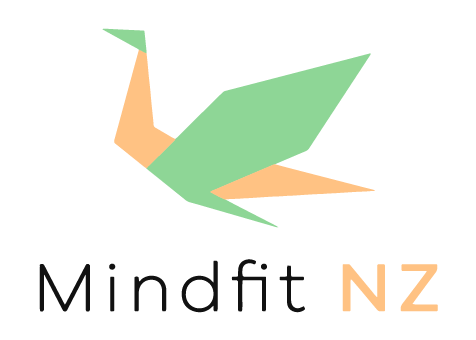TIP SIX – MINDFULNESS ☀️
So, what is Mindfulness? What are the benefits, where did it come from, and most importantly, how do you get started?
Mindfulness is rooted in Buddhism, though Buddhism and Mindfulness are not interdependent. Mindfulness lightens suffering and increases our awareness. There is nothing to lose, and everything to gain with practicing Mindfulness.
Mindfulness might be for you if…
- You get so focused on the goals you want to achieve that you lose touch with what you are doing right now to get there.
- You rush through activities without being attentive.
- Your mind is chaotic and you struggle to focus your thoughts.
Practicing Mindfulness will help you create a mental environment that allows you to be present while you work towards achieving your goals.
“When you are on a journey, it is certainly helpful to know where you’re going – but remember: the only thing that is ultimately real about your journey is the step that you are taking at this moment. That’s all there ever is.’ – Eckhart Tolle.
The western world has developed a harmful achievement model centered around sayings like, ‘Make it Happen’ and ‘Just do It.’ At the end of the day, expressions like this leave most of us feeling deeply inadequate. Mental Health is such a prominent issue in the West because ‘perfection’ is our end goal, and nothing is ever perfect. With this frame of mind, we have all lost before we have even begun.
It’s no wonder then that the Western world has looked to other cultures for inspiration on how to help our mental health. Mindfulness is a practice which evolved to shift the harmful Western self-improvement model to positive mantras of,‘I am enough’ and ‘Be here now.’ Mindfulness recognizes the importance of every moment, whereas Western thought can’t help but look into the future, losing sight of the moment altogether.
If you’re wondering then, ‘What is Mindfulness, and how do I do it?’ The answer is simple. Mindfulness is the act of concentrating on your breath and being aware of what is going on around you in the present moment. Sounds simple, right? It can be, but it can also be very challenging. Especially in the 21st century, when we have Instagram, Facebook, friends, family, current affairs, the TV, and so much more coming at us from all different directions. We live in a time when it’s difficult to concentrate on even the most exciting topics, let alone your breath. That’s why mindfulness is so great. It stops the background noise of our busy lives and brings us back to what matters, this very moment. The more you do it, the more the simplicity of it becomes clear and the benefits start to manifest.
First of all, don’t fret if ‘being present’ doesn’t come to you in an instant. You are human, and humans are easily distracted. It’s also likely that you already practice Mindfulness unknowingly throughout your day. Examples of mindful moments are as simple as noticing the petals of a beautiful flower in your garden. Or coming up for air after being in the water.
Mindfulness comes to you when you are feeling grateful for the cool breeze on your skin.
Mindfulness is as pure and straightforward as acknowledging the clear blue sky on a warm summer’s day.
Mindfulness, in essence, is being attentive to your surroundings, and eventually, your feelings.
So, long story short, here are five simple ways you can begin to incorporate Mindfulness in your life.
1. Focus on your breathing

This box breathing method is especially helpful when you are feeling anxious, nervous and stressed. Or if you simply want to boost your mood and feel more calm & relaxed.
- Breathe in like your smelling a flower (count to 4)
- Hold it (count to 4)
- Let the breath out slowly like you’re blowing a bubble with a bubble wand (count to 4)
- Hold it (count to 4)
- Repeat
Continue this exercise for at least one minute, or until you feel more relaxed. If your heart is racing and you want to slow it down, make your out-breath slightly longer than your in breath.
The best part of using the deep breathing tool is that you can do this absolutely anywhere without drawing attention. It is a great way to ground yourself back into the present moment and reduce any stress and anxiety on the go! It can also help you to regulate distressing emotions so that you can get to a place where you can safely process them and it can help treat insomnia by allowing you to calm your nervous system at night before bed. Box breathing can even be efficient at helping with pain management.
If you’re struggling to take deep breaths/or have in the past, first try the exercise while lying on your back — this will relax your stomach muscles, allowing them to move more freely.
2. Go for a walk
Walking is not only a great and relaxing form of exercise, it is a well-known stress reliever, a mood booster and it can also be a valuable mindful exercise. When you are walking, be aware of everything around you, the sights, sounds, colours and the weather. When your thoughts stray to your inner world, bring them back to your surroundings. Don’t wait for the sunshine, a walk in the wind or rain can be every bit, if not more stimulating for the senses.
3. Observe your thoughts for five minutes a day
- This exercise is a form of mindful meditation. It is especially helpful for quietning an unruly mind.
- Set aside a time when you won’t be interrupted and switch off your phone.
- Sit in a comfortable position.
- Observe your breathing in its natural state, don’t try to change it.
- Thoughts will come and go but don’t let them distract you, simply observe them for what they are and bring your attention back to your natural state of breathing.
Practice this every-day and increase it to longer periods when possible. Make note of thoughts that interrupt your mindful flow.
4. The body scan
This is a great way to release tension you may not realise you’re experiencing. Body scanning involves paying attention to parts of the body and bodily sensations in a gradual sequence from your feet to your head. There are plenty of body scan tutorials on youtube you can find to help guide you.
5. Take a moment to notice the sounds around you
- It could be the sound of traffic, the rain falling, swaying leaves, birds chirping.
- Set a timer for how long you would like to listen so you know how long you have to stay tuned into the exercise. Focus your awareness on these sounds and really listen to them.
- Try not to judge the sounds, just observe them. Closing your eyes may help.
Photo credit: @journey_to_wellness

